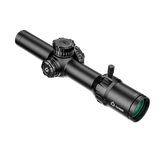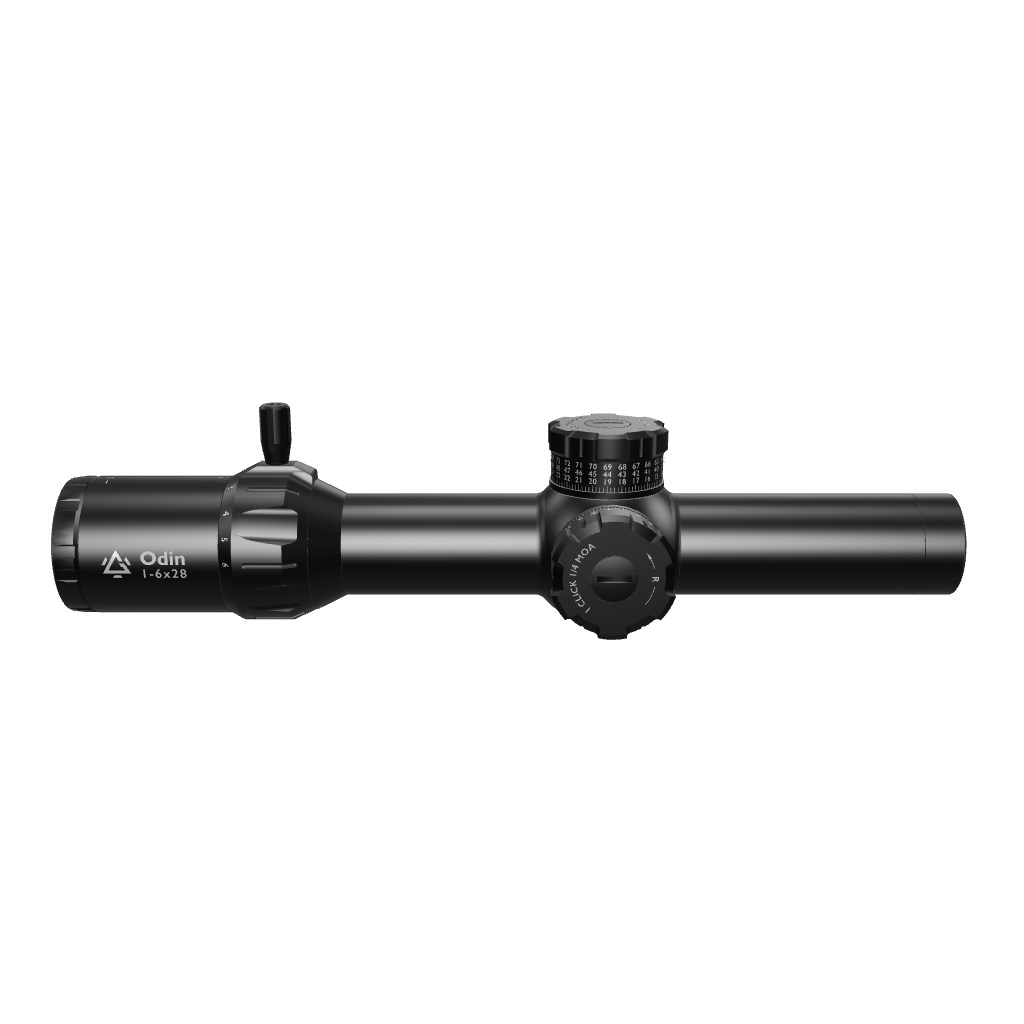ARE LPVOs DEAD? MAYBE NOT YET!
Depending on your level of exposure to the internet, you might have noticed that now is actually an interesting time to be in the market for a Low Power Variable Optic (LPVO). It seems like more and more members of the shooting community are coming to the conclusion that LPVOs are dead. This is becoming a rather serious topic, one that you might want to pay attention to before you go ahead and make your decision to purchase a new LPVO. So, are LPVOs bad now, or is this just another passing trend that will fade away with time? What exactly is driving this perception? Let's take apart each reason why these arguments are being made, put it in context, and examine it in greater detail.
REASON ONE: THERE ARE NEW ALTERNATIVES THAT ARE JUST BETTER
LPVOs have been around since the 1920s, and with technology becoming increasingly advanced, they were bound to face stiff competition at some point. In recent years, new types of scopes have emerged, offering different advantages. Some of these novelties are really good and have either captured new shooters or pulled old shooters away from LPVOs. We can clearly see this with Prism Scopes and Red Dots with Magnifiers, which are now enjoying massive popularity.
Prism Scopes: A Better Alternative?
Prism scopes are great if you mainly shoot short-range. They are designed to be compact and really easy to handle, even in tight spaces or areas with thick vegetation. Most models even have etched reticles, which do not shift or become misaligned during recoil. The optics are usually pristinely clear, and it is no wonder why shooters love them.
But prism scopes do not offer variable magnification. Magnification is fixed, so they are only a great option if you consistently shoot over a fixed range. Some shooters prefer optics that excel in a specific role rather than those that attempt to cover multiple roles. For them, it suffices to have a modern scope that excels at the one thing they need it to do and comes at a more affordable price. If that is you, then it might not really be necessary to spend the extra to get an LPVO.
What About Red Dots with Magnifiers: Better than LPVOs?
The combination of a red dot sight and a flip-to-side magnifier makes Red Dot sights with Magnifiers a more direct modern competitor to LPVOs. Like LPVOs, this setup allows variable magnification: you can use the 1x magnification red dot for close-quarters shooting and then quickly flip the magnifier in place to switch to higher magnification.
This system is also extremely lightweight, fast, and easy to get used to. Though magnification is usually up until x6, these Red Dots with Magnifiers offer enough flexibility for some shooters to consider them just as appealing as an LPVO.
These technologies have provided formidable alternatives to LPVOs, and as they have gained traction, some shooters have moved away from LPVOs. This is one of the major reasons why some are saying LPVOs are dead.
CONSIDER THIS: WE CANNOT IGNORE LPVO TECH
We have to acknowledge that modern technology has also influenced LPVOs. LPVO optics have also benefited from technological improvements, and this is probably the biggest reason why they are still relevant today. We have seen new technology completely transform the way reticles are made and used, and manufacturers are constantly coming up with new and superior glass for lenses and other parts. These innovations are keeping LPVOs ahead of the trends.
First Focal Plane (FFP) Reticles: First Focal Plane LPVOs were introduced way back in the mid-90s, but few innovations have impacted the shooting world much as they did. Shooters could have precision and long-range engagement at their fingertips like never before, an advantage that is still relevant today.
Improved Glass Quality: High-quality glass reduces distortion and provides better light transmission, making it easier to acquire and engage targets even if the lighting is not the best. With advances in glass technology, the lenses used in LPVO optics have become sharper, brighter, and more precise. This particular advancement is allowing modern LPVOs to keep up with dedicated scopes in terms of optical clarity and performance.
REASON 2. LPVOS ARE TOO HEAVY
LPVOs' versatility comes with a trade-off: they tend to be larger and heavier than other optics (like red dots or fixed-power scopes). The added weight of an LPVO can sometimes affect the rifle's balance, making it feel front-heavy.
It cannot also be denied that a heavier scope influences how quickly and comfortably you can acquire targets, particularly in dynamic or fast-moving environments. This is not a problem you would face with red dots and prism scopes (at least not to the same degree).
As is the case with trends, more and more people now see the relatively bulkier LPVOs as less desirable, contributing to the idea that they are becoming obsolete.
CONSIDER THIS: Modern LPVOs are Getting Lighter and Lighter
Modern LPVOs have become more compact and lighter than their predecessors. Every day, more LPVO models with advanced features such as higher magnification ranges, better reticles, and improved durability are introduced into the market.
Manufacturers, such as GUNNR, have made significant strides in reducing the size and weight of their LPVOs without compromising durability. You can easily mount any of GUNNR’s LPVO Optics on your rifle without noticing any unbearably negative impact on the balance or handling.
As long as manufacturers see demand from consumers, they will continue to innovate and improve LPVOs. So, it may be too early to declare them gone.
REASON 3: IT TAKES TOO LONG TO LEARN HOW TO USE AN LPVO
Another argument is that mastering how to use an LPVO is a long and complex process with a steep learning curve. This argument is not false: learning how to use an LPVO effectively does require a certain level of practice, particularly when it comes to quickly and accurately adjusting magnification in dynamic environments.
Unlike fixed-power optics or red dots, where the shooter doesn't need to think about magnification, LPVOs require you to be mindful of their settings and to adjust them based on the distance to the target.
Some shooters gravitate towards optics that are easy to use and require less training to master, and this is further enhancing the perception that LPVOs are less relevant.
At the end of the day, what really matters is whether you consider the experience of using the lpvo to be worth the training it takes to master it. If you think that variable magnification is overrated, you probably would prefer an alternative that is easier to master.
In high-stress situations, the need to adjust magnification can be a potential point of failure anyway, and that is a legitimate concern. It seems perfectly fine to opt for a simpler system.
ARE LPVOS TOO EXPENSIVE?
Cost is always one of the primary factors when selecting an optic, and for some people, the high prices of top-quality LPVOs are a significant turn-off. If you are to purchase from a big brand, a top-quality scope —such as those with first focal plane (FFP) reticles, high-quality glass, and durable construction—can be anywhere between $3,000 to $5000!
Even for a scope that is just “good enough” quality, you probably have to spend upwards of $300! This economic factor has led some to turn away from LPVOs and consider them an unnecessarily expensive option in a market where good alternatives exist.
For shooters who are budget-conscious, such high prizes may not be justifiable, especially when other optics can offer good performance at a lower price point. Prism scopes and red dots with magnifiers often provide good optical performance at a lower cost, and they are all appealing alternatives.
Still, Several People Are Buying!
The versatility the LPVO offers is just too attractive. You are always likely to find more shooters who value the versatility, reliability, and performance of the LPVOs than shooters who are of a different opinion. This distinct advantage has ensured that LPVOs remain a staple in the optics market, with new and experienced shooters alike appreciating the benefits these optics offer.
SO, SHOULD YOU GET AN LPVO?
Overall, it is safe to say that the perception that LPVOs are dead has more to do with shifting trends and the introduction of new technologies than with any fundamental flaw with LPVOs themselves. So, the choice between an LPVO and another optic should ultimately depend on your individual needs, preferences, and the specific applications for which you would like to use your optic. If your shooting needs align with the strengths of an LPVO, there is no reason why you shouldn’t go ahead and get one.
In that case, you’d likely want to check out GUNNR
GUNNR’S ODIN SCOPES, AN AFFORDABLE OPTION
Gunnr’s Odin LPVO scopes are the newly released line of scopes from GUNNR, a company quickly gaining ground with its high-quality optics. These offer the perfect blend of innovation and reliability at a price that won't break the bank.
- With Odin scopes, you experience the superior clarity of German Schott ED Glass, ensuring exceptional edge-to-edge sharpness for every shot.
- The first focal plane (FFP) reticle provides fast, accurate distance estimation at any magnification, adapting seamlessly to changing light conditions with six brightness settings.
- These optics are Constructed from durable 7075 aluminum alloy; this scope is IP67-rated for dust and waterproof performance, guaranteeing dependability in any environment. With the Gunnr Odin, you're equipped with a versatile tool designed to enhance your shooting experience and leave you wondering how you ever aimed without it.







